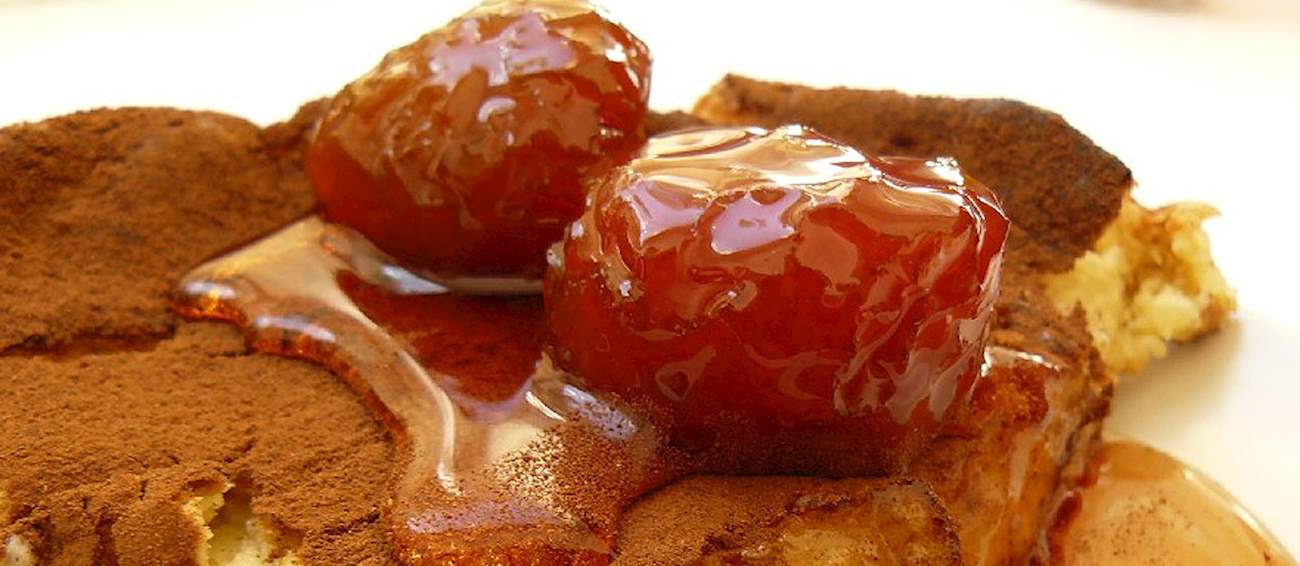Best Plums Types in the World
A specialty of the Lorraine region in France since the 16th century, these plums are small with a striking yellow to golden color. Their flesh has a smooth, fine texture and on the outside, the skin has numerous tiny spots. Usually eaten fresh or cooked in jams and pies, Mirabelle plums have a sweet, delicate taste and are harvested in September.
A great thing about them is that they don't have a pit on the inside, so there is no need to manually remove it before cooking. The plums can also be used in tarts, souffles and sauces, and chefs are still inventing new recipes based on these unique plums.
Umeboshi plums are a staple of Japanese cuisine, made from dried and pickled ume fruit, which is related to the apricot. Also known as Japanese apricot, Japanese plum, and sour plum, umeboshi are wrinkled and round, while the flavor is distinctly sour and tart due to the high content of citric acid.
They're harvested at the end of June. These sour plums are traditionally combined with rice and eaten either as a side dish or inside rice balls. Umeboshi are also praised because they are beneficial to human health. Legends say that Samurais ate them before heading into battles, and nowadays umeboshi is considered to be one of the ultimate hangover cures.
This plum dessert is made from the fruit of the Queen Claudia Verde cultivar. Originally from France, this type of plum is a staple of the Portalegre region. Grown in deep, well-drained soil and under the bright Portuguese sun, Elvas plums are usually picked while still green, during June and July.
They are then transported to factories, where they are processed the very same day into this famous plum confit, which is made by cooking and reducing the plums with sugar syrup, creating a rich dessert with an intensely sweet flavor and aroma.
Damson is a plum variety that's found throughout Europe, but the name is most commonly applied to varieties that are native to the United Kingdom. The plums are small to medium in size, with an ovoid shape. The flavor is distinctive, rich, sweet, and slightly astringent when fully ripe.
The skin ranges from dark blue to indigo and near-black in color. This type of fruit is considered to be of the clingstone type, meaning that the flesh sticks to the stone in the center. Damsons are harvested from late August to September or October and they're mostly used for cooking and making jam or fruit preserves.
Susina di Dro is a fresh plum produced within numerous municipalities in the Autonomous Province of Trento, situated in the Sarca Valley in Trentino-Alto Adige. It is distinguished by its high content of polyphenols and low sugar content: these two characteristics are closely tied to the distinctiveness of the production area, especially the regular winds.
The most important is the so-called Ora del Garda which guarantees clear skies and, therefore, continuous sunshine, as well as high temperatures. Two different growing methods are used during the production process: pieno vento and fusetto.
Susine, or how they call it in a local Ligurian dialect, balle d'ase (lit. balls of asses) is a variety of a very small plum grown around the community of Pignone. Although miniature, these violet-colored plums are extremely delicious, and therefore very popular.
They can be enjoyed raw, or used to prepare a wide range of desserts.
One of the oldest plum varieties, the 'Golden Blue', as the Stromberg locals lovingly call it, was brought into the region from southern France and Spain by clerk and traveler Louis Niedieck in 1790. Today, the Stromberger plum variety includes about 15,000 plum and damson trees which decorate the landscape of the historic castle village of Münster.
Connoisseurs appreciate the Stromberger Pflaume as a small but very fine plum. Due to its low water content, drying times are shorter compared to other plum varieties, making it mildly aromatic and easily soluble. This characteristic makes them an excellent choice for cooking and baking, and thanks to their sweetness, it makes them the perfect choice for producing alcoholic beverages.
TasteAtlas food rankings are based on the ratings of the TasteAtlas audience, with a series of mechanisms that recognize real users and that ignore bot, nationalist or local patriotic ratings, and give additional value to the ratings of users that the system recognizes as knowledgeable. TasteAtlas Rankings should not be seen as the final global conclusion about food. Their purpose is to promote excellent local foods, instill pride in traditional dishes, and arouse curiosity about dishes you haven’t tried.






